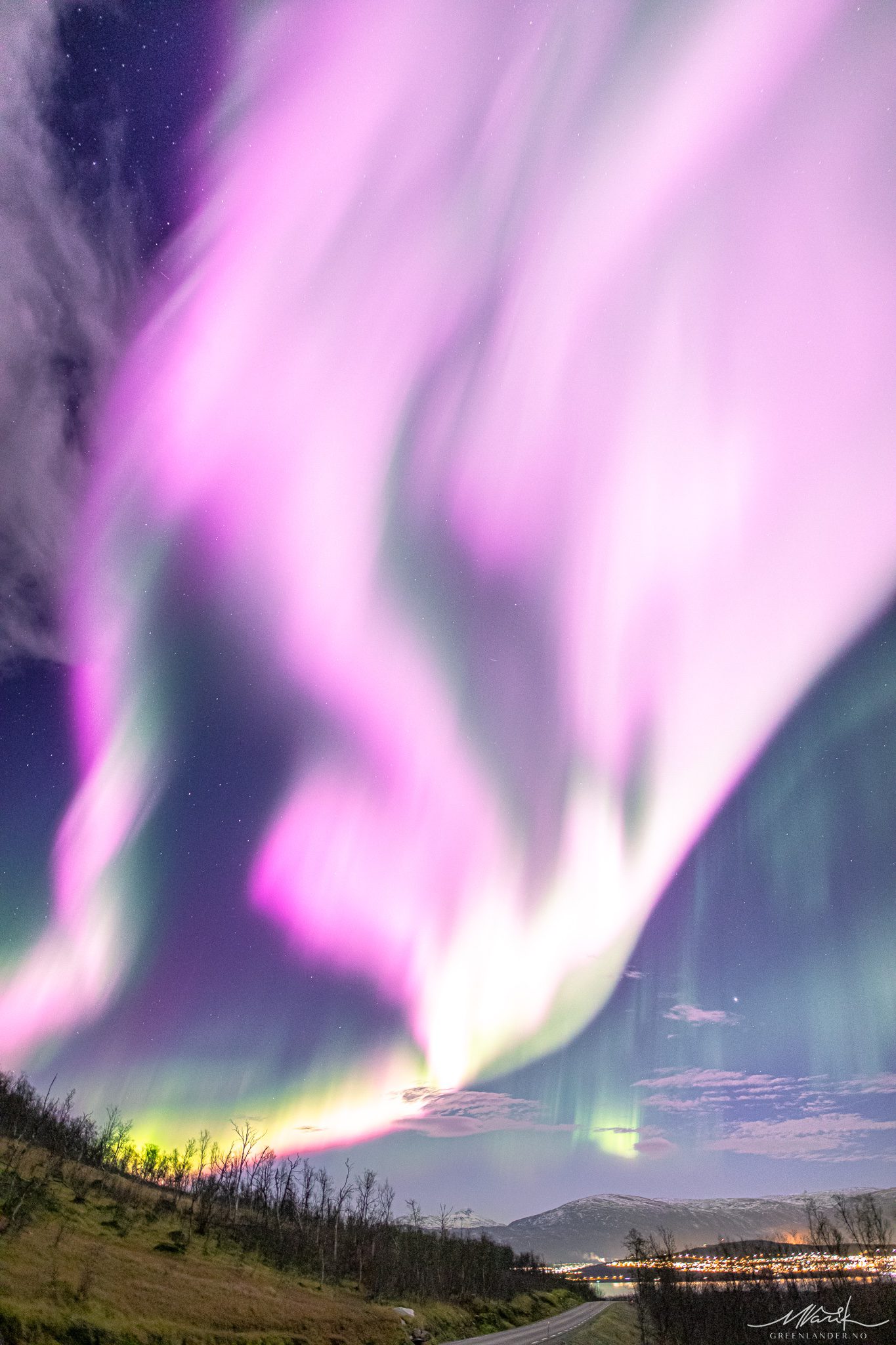A particularly strong solar storm cracked a hole in Earth’s magnetic field this week, sparking some epic – and rare – pink auroras. No, the planet hasn’t been attacked by intergalactic unicorns riding in on a trail of pink stardust, but it does take some unusual circumstances to create this particular colorful light show.
The vivid scenes were caught by Markus Varik, a guide for northern lights tour operator Greenlander, in the skies above Tromsø in Norway on November 3, who shared them to the Greenlander Facebook page.
Auroras occur when powerful solar winds – highly energetic charged particles – get flung out from the Sun and slam into Earth, ripping holes in its magnetic field, or magnetosphere. These charged particles pour through the hole, creating a geomagnetic storm that presents itself to us as pretty auroras. As the magnetic field is weakest around Earth’s poles, that’s where auroras usually occur.

Pink auroras are sparked when solar winds travel further into the atmosphere than normal. Image courtesy of Markus Varik, Greenlander
The auroras Borealis and Australis usually appear green (sometimes with a hint of red or purple) because most solar winds only reach altitudes of 100-240 kilometers (60-150 miles) where there is a higher concentration of oxygen. The “excited” oxygen particles give them their characteristic green glow.
It’s the nitrogen in the atmosphere that can make them appear pink, and nitrogen particles occur at lower altitudes of around 100 kilometers (62 miles), where most solar winds don’t reach, so it takes particularly high solar activity to fling charged particles with such force that they do. A storm like the one that occurred on November 3.
A G1-class geomagnetic storm hit Earth last week, cracking open a hole in the magnetic field that stayed open for six hours. The NOAA’s Space Weather Prediction Center had issued warnings of the potential G1 storm, which although deemed as “minor” on its 1-5 scale, still warns of power grid fluctuations, minor satellite impacts, migratory animals being affected, and, of course, epic auroras.
Don’t worry, cracks in Earth’s magnetic field are normal. The magnetic field acts as a shield to protect us from solar storms spat out by the Sun. It was thought they opened and closed relatively quickly but now we know they can stay open for up to 14 hours, and we’re all still here.
The Sun is gearing up towards its most active period in the solar cycle (July 2025) and is already unusually active quite early. Your chances of spotting auroras are already pretty good right now, but they’re just going to get better and better over the next three years.
[HT: Livescience]
Source Link: Hole in Earth’s Magnetic Field Cracks Open For Six Hours Sparking Rare Pink Auroras